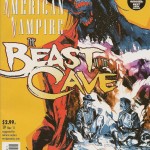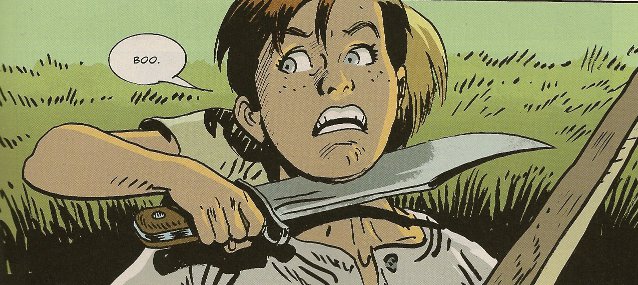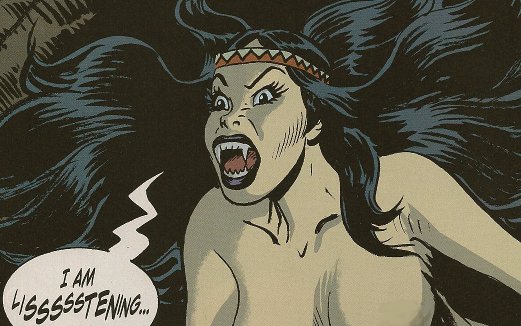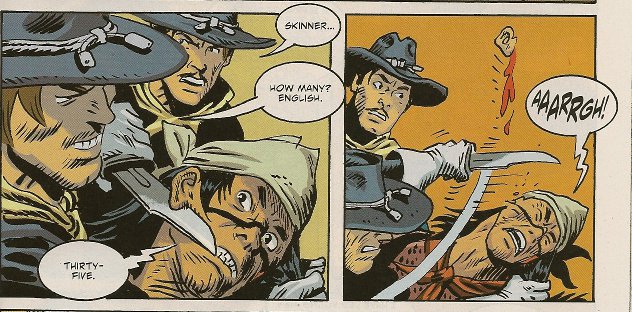 In March 2010, American Vampire debuted through Vertigo. The premise of the book is that in the United States a new breed of vampire has been born, one with that is faster and more powerful than its European counterpart. It’s also impervious to sunlight. USA! USA! USA!
In March 2010, American Vampire debuted through Vertigo. The premise of the book is that in the United States a new breed of vampire has been born, one with that is faster and more powerful than its European counterpart. It’s also impervious to sunlight. USA! USA! USA!
The first five issues of the series drew a fair amount of buzz because in addition to stories written by creator Scott Snyder, there were also stories written by horror master Stephen King.
The initial arc follows the story of the first American vampire, Skinner Sweet, who was a deadly, notorious outlaw well before he was ever infected with vampire blood. It also follows the story of Pearl Jones, a struggling actress in the era of silent film, who Skinner saves from European vampires and turns into his first progeny. Both sets of stories were drawn by Rafael Albuquerque. Albuquerque’s a man who knows his way around an art panel. His stylized use of heavy contrast shading, mixed with pencil sketches, ink washes and more traditional inking, have given the books a look that sets them apart from other horror comics and helped to win the book IGN Best New Series of 2010 and an Eisner Award for Best New Series this year in San Diego.
Sounds good, right? Well, if for some reason you’re not reading this book yet – say you are from Brockton Mars, or have been trapped under something heavy for the past year and a half – Snyder gives you a great place to jump on with issue #19, The Beast In The Cave. Spoilers ahead.
The Beast In The Cave: Part One traces the story of Skinner Sweet before he became a vampire. Orphaned after his family’s farm was destroyed in a battle between North and South during the Civil War, Sweet comes to live with the Book family, who have an only child, Jim. They get along…great:
They do actually bond over time and eventually find themselves serving together in the US Army, fighting Native Americans who just don’t want to roll over, take their smallpox infected blankets, and quietly be rounded up to live on reservations for some reason. In fact, one group of fighters, led by a man named Hole In The Sky, is feared to be trying to get support and reinforcements from Mexican forces. We’ll find that the truth about his plans for reinforcements are far worse than the use of undocumented workers, in a naked and deadly kind of way:
Meanwhile, Skinner is beginning to develop a reputation as a bit of a loose cannon in his unit for his Jack Bauer-esque interrogation technique while questioning a prisoner that he and Jim caught when they discovered, and subsequently slaughtered, a group of Native American scouts from Hole In The Sky’s camp:
Skinner is set up to be a very bad guy, violent, stubborn and lacking in morals, well before he ever comes near a drop of vampire blood. But, because Snyder has depicted such a well written, close relationship between Jim and his foster brother, Skinner, you find yourself rooting for him and caring about him because Jim does. It’s compelling stuff.
Art in this issue (and through #21 in this arc) is handled by Jordi Bernet (Jonah Hex), a Spanish artist whom Albuquerque cites as an influence. His art is more minimalist and less stylized than Albuquerque’s, but it works in this book, particularly in the early panels depicting the boys’ childhood against the backdrop of the Civil War. Now I feel like I need to go find my Jonah Hex back issues and re-read them.
All in all, if you’re already reading American Vampire, this arc will keep you reading it. If you haven’t tried it yet and would like your vampire stories to be less sparkly or less about Anna Paquin’s boobs, give this book a shot. You will be rewarded.



 Podcast RSS Feed
Podcast RSS Feed iTunes
iTunes Google Play
Google Play Stitcher
Stitcher TuneIn Radio
TuneIn Radio Android
Android Miro Media Player
Miro Media Player Comics Podcast Network
Comics Podcast Network